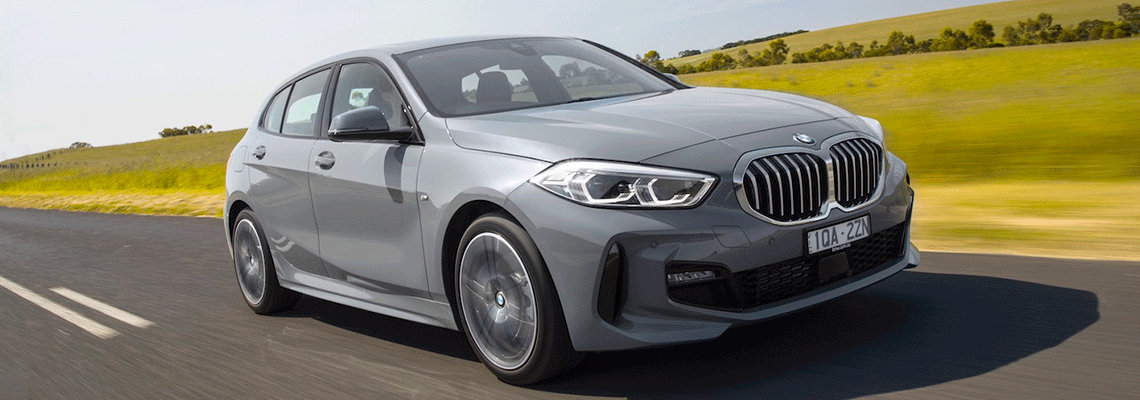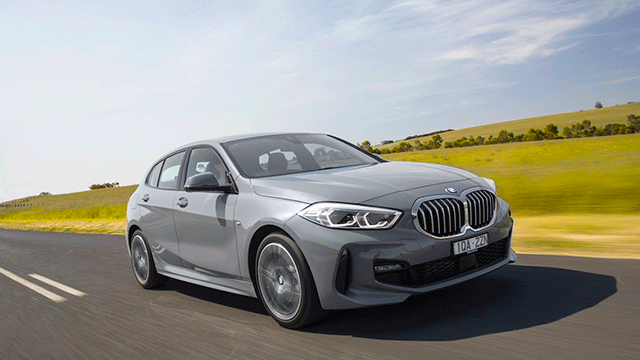Going back to front: BMW 1 Series


While some might see it as sacrilege, a front-wheel-drive BMW 118i does have its benefits.
During the 1970s BMW penned ‘the ultimate driving machine’ slogan for its cars, based partly on their rear-wheel-drive (RWD) and near 50/50 front-to-rear weight distribution – considered fundamental to optimum handling.
What is it?
Through the intervening years, BMW acquired the iconic Mini brand and its long-standing expertise in building small, sporty front-wheel-drive (FWD) cars such as the Mini Cooper S. FWD gives an inherent space advantage as the engine, transmission and drivetrain are packaged together as a unit, allowing designers more freedom to maximise the cabin and luggage area. So it’s not entirely surprising BMW has adopted it for its latest 1 Series, a car competing in a segment where FWD dominates.
How much is it?
For now, the range consists of two models, the 118i and the sporty M135i xDrive, the first 1 Series to feature all-wheel-drive here. Pricing starts at $42,990 for the 118i and $63,990 for the M135i xDrive. Powering the 118i is the 1.5-litre three-cylinder used in the previous RWD generation, making 103kW and 220Nm. The all-new bodyshell consists of more aluminium and weighs an impressive 30kg less than its predecessor. The new design increases occupant space and provides a useful 380 litres of luggage space, up 20 litres from the previous generation.
What do you get?
Standard features include a 10.25-inch digital instrument display and infotainment screen, wireless phone charging, head-up display, front and rear parking sensors, rear camera and 18-inch alloys. BMW’s M Sport package is standard and includes a leather multi-function steering wheel and sports seats finished in a cloth/faux leather trim. The driving assistant pack offers approach warning control, lane departure warning, lane change warning and rear cross traffic alert.
Staff in the office wanted to know if the 118i “still felt like a BMW to drive”. The answer? Well, sort of... While the 1.5-litre engine develops maximum torque from just 1500rpm, it isn’t exactly BMW-esque in its delivery and has the distinctive vibration three-cylinder engines are known for.
What's it like to drive?
The stop/start function doesn’t help matters – on take-off it feels like an eternity before the engine fires up. Acceleration is doughy as a result and even through bends the transmission is slow to react on downshifts. Driveability improves if you select sport mode, one of three options available via switches in the centre console. It sharpens the engine and transmission calibrations and shift points, and I’d recommend leaving sport mode as the default setting.
The package was frugal on test, using 7.7L/100km of 95RON around town and 6.6L/100km over our highway cycle. Its 103kW isn’t a lot to push through the front wheels (a Toyota Corolla has 125kW) and BMW’s i3-inspired traction control system, fitted for the first time to a 1 Series, minimises wheelspin and torque-steer when pushing out of a corner. The fairly low-profile 225/40X18 Bridgestone tyres have more than enough grip, even if the resulting ride quality is on the firm side for an entry-level model.
Final thoughts
While the 118i has lost the RWD characteristics beloved among traditionalists, in day-to-day driving few would notice the change. Most buyers will be impressed with the extra cabin room, particularly the second row’s leg room and foot space, and larger cargo area. The latest 1 Series stands as a tribute to the original Mini and its designer, Sir Alec Issigonis, who 60 years ago conceived a package with mechanicals up front to maximise occupant space.
Pros: More room; standard safety features
Cons: Pricier than the outgoing model; lacklustre performance
Looking to buy a new car?
NRMA Members save an additional 1%* on our competitive car loan rates.






